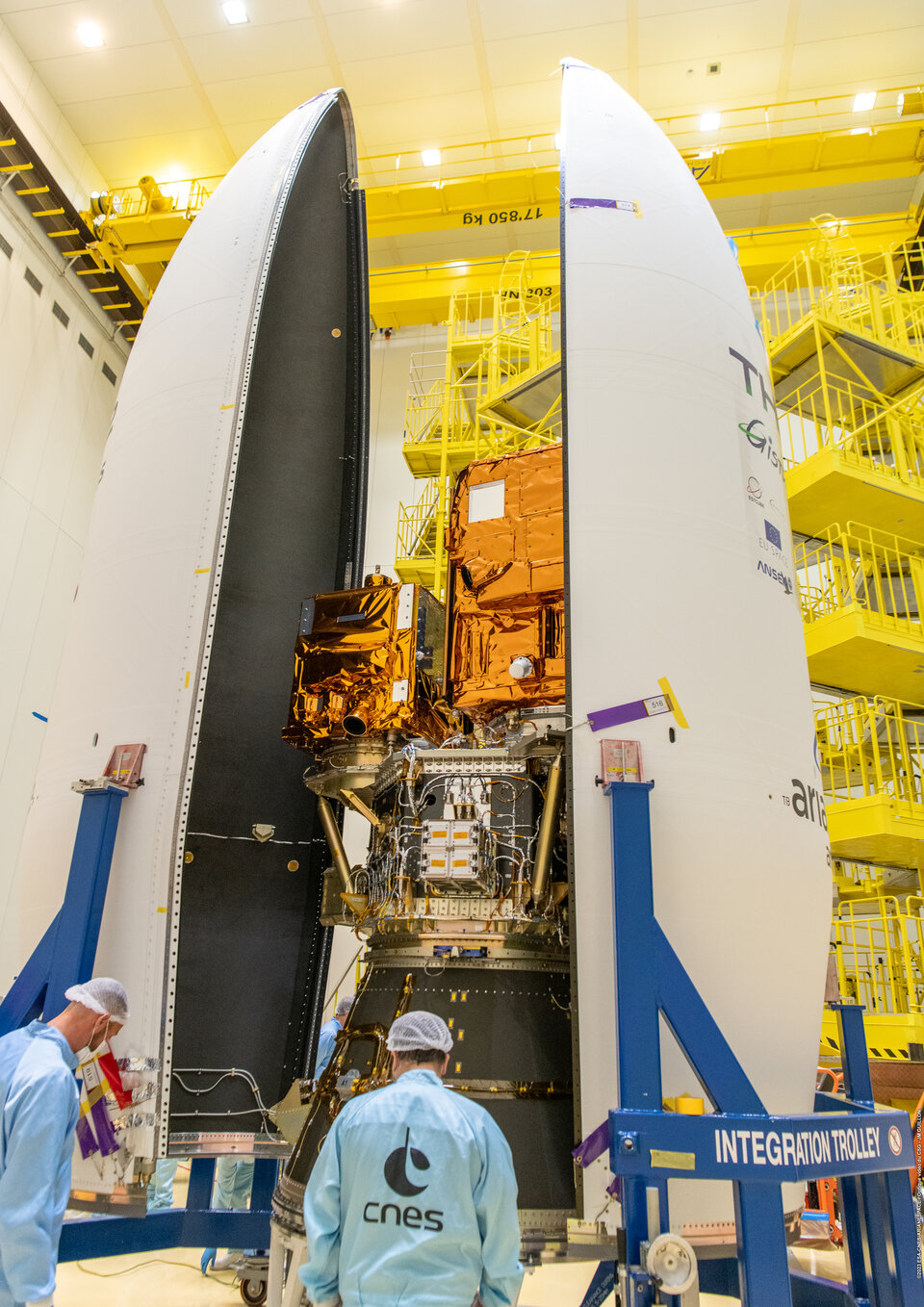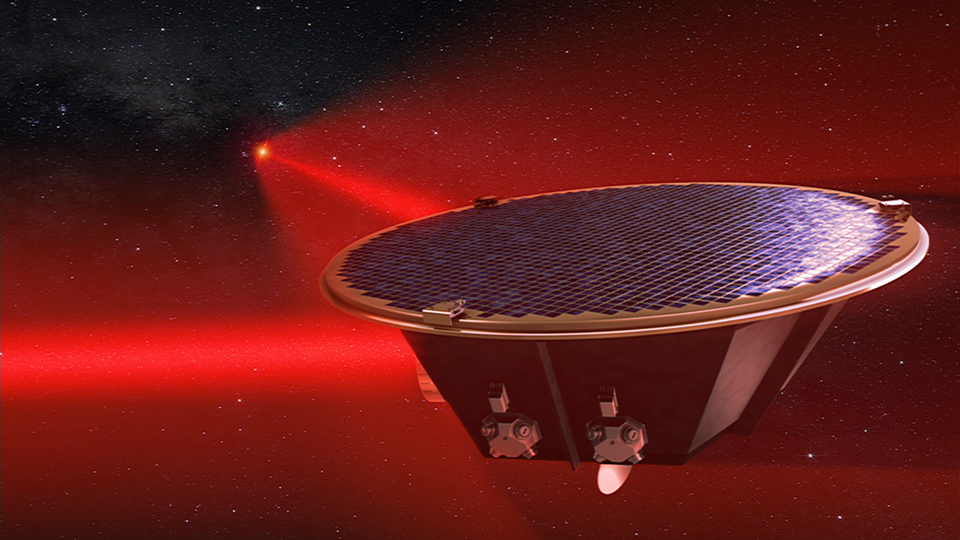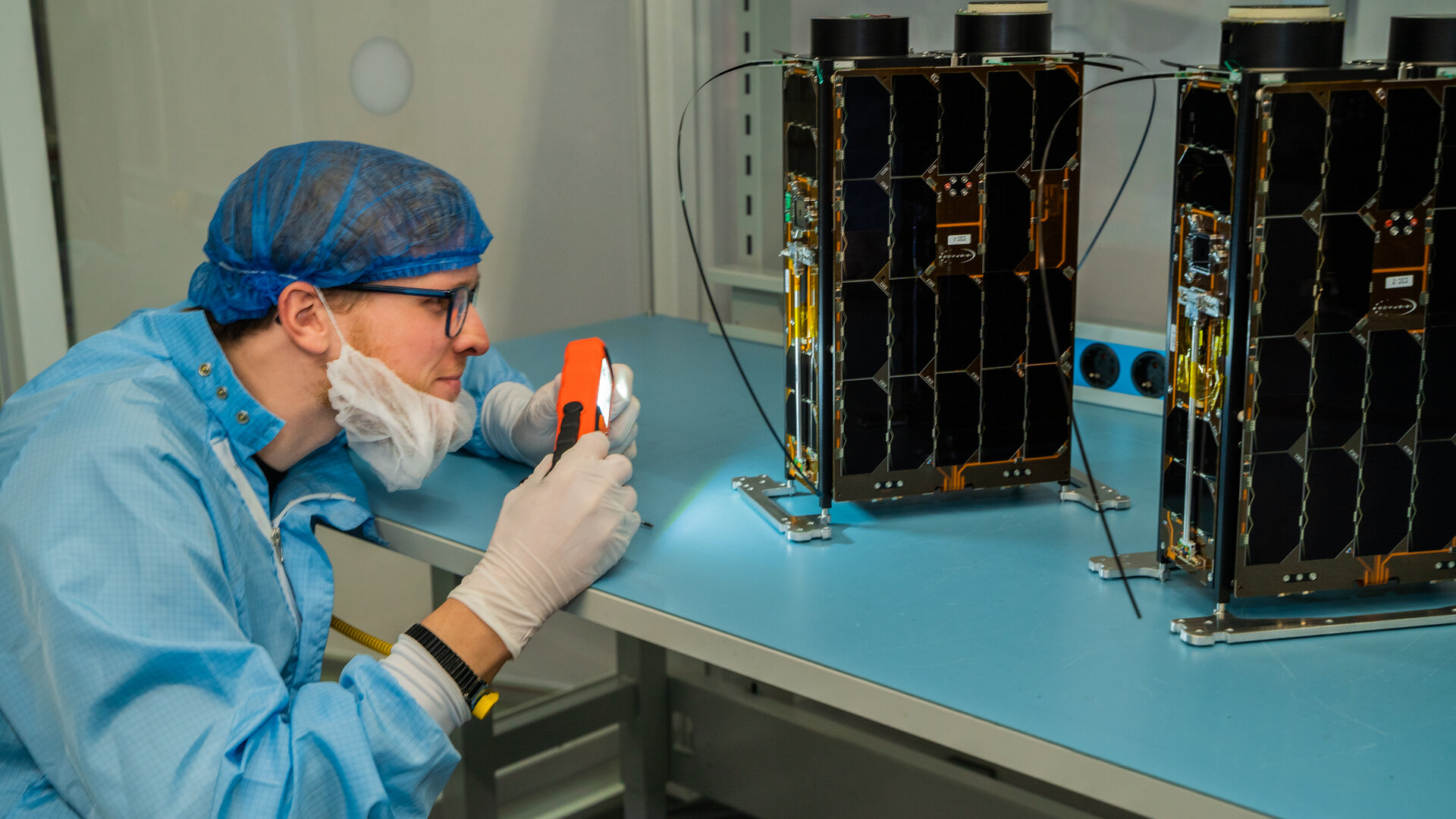Shoebox-sized space labs being launched by Vega
Among the smallest passengers aboard Europe’s Vega launch tonight are also the most ambitious in nature: twin miniaturised laboratories, or CubeSats, for the in-orbit demonstration of disruptive, state-of-the-art space technologies.

The seven test payloads aboard the European Commission-supported CubeSat Carrier (CSC) satellites, ∑yndeo-1, and ∑yndeo-2, include an innovative plasma jet pack and an ultra-sensitive magnetic instrument. The latter is planned for ESA’s future LISA constellation, which will need to maintain a precise position in deep space in order to detect the nearly imperceivable passage of gravitational waves.
Experimental boosts for European competitiveness
The twin nanosatellites are being flown through the European Commission’s In-Orbit Demonstration/In-Orbit Validation programme, aimed at delivering early orbital testing of new technologies to boost the competitiveness of Europe’s space sector.

This programme is being managed on behalf of the Commission by ESA’s Small Satellite Platform Unit.
“This launch is really a milestone for us because it is the first of many launches in this programme, and these two ∑yndeo CubeSats hold special significance in turn,” comments Frederic Teston, heading ESA’s Systems Department.
“Other IOD/IOV CubeSats – such as ESTCube-2 and the ANSER CubeSats, also aboard this next Vega – are flying as complete systems, but these CSC CubeSats represent an aggregation of separate payloads being flown together, which is another class of service offered by this programme.

“This did present an engineering challenge, because we needed to ensure all these demanding payloads could work well in orbit alongside each other. This involved managing the interfaces of everything, ensuring their proper sizing, and looking closely at the system budget and quality assurance aspects. Our plan is to operate for a year at least, with a possible mission extension.”
Building on flight heritage
A CubeSat is a small, low-cost nanosatellite built up from standardised 10-cm boxes. The ∑yndeo CSCs are both ‘6-unit’ CubeSats, with platforms designed by small satellite specialist ISISPACE in the Netherlands.

“These CSC CubeSats have been customised for IOD/IOV from our existing 6-unit platforms, which have ample flight heritage,” explains Joachim Strenge of ISISPACE, system engineer for the mission.
“Fitting all these complex payloads into such small, fixed spaces is demanding, but we focused on getting a good definition of all the interfaces early on, avoiding major problems in terms of factors such as power and data interfaces, electromagnetic compatibility and field of view.
“The biggest challenge was linked to one payload highly sensitive to magnetic fields, requiring an extra level of verification related to magnetic cleanliness compared to a standard mission. The customer wants to be sure any data they get back is coming from the space around the CubeSat, and not the CubeSat itself!”

In-orbit experiment roster
The experiments flying on ∑yndeo-1 are as follows:
●A miniature Star Tracker for Nanosatellites from Solar MEMS Technologies, monitoring surrounding constellations to determine a mission’s position and orientation
●A highly-accurate CubeSat attitude determination and control system called Arcus ADCS, from Arcsec in Belgium
●An arc-second accurate CubeSat-tailored star tracker called Sagitta, with a cross-boresight accuracy of 3 arc seconds, also from Arcsec
●RADIOX: Radiation effects during In-Orbit flight Experiment – a payload from Katholieke Universiteit Leuven with support from CERN.

The experiments flying on ∑yndeo-2 are as follows:
●Spacepix Radiation Monitor, based on CERN technology
●In-orbit low frequency noise characterisation towards the magnetic measurement feature for ESA’s future LISA mission, developed by a team from the University of Cadiz
●Plasma jet pack, based on novel vacuum arc physics for electric propulsion, using solid metal as a propellant.

Looking towards LISA
The next decade Laser Interferometer Space Antenna, LISA, is designed for gravitational wave detection. LISA will comprise three spacecraft each 2.5 million km apart from the other, linked by laser which will reveal any tiny perturbations due to the passage of these waves through spacetime.
For the mission to operate as planned, the spacecraft must have their position in space very precisely measured and controlled. Some aspects of the control technology needed were demonstrated by the 2015-launched LISA Pathfinder mission, but others remain to be mastered.

In-orbit operations
ISISPACE has also contributed the Quadpack Type2.XL deployer system that will help safeguard the ∑yndeo CubeSats during Vega’s ascent to orbit, then push them free of the Vega upper stage to attain their target orbits.
The company will also operate the satellites from its ground station in Delft, with a commercial ground station service to serve as backup as needed.
Looking ahead, ISISPACE is also working with the IOD/IOV Programme on the Cassini mission, consisting of a trio of CubeSats for additional payload testing in orbit.








